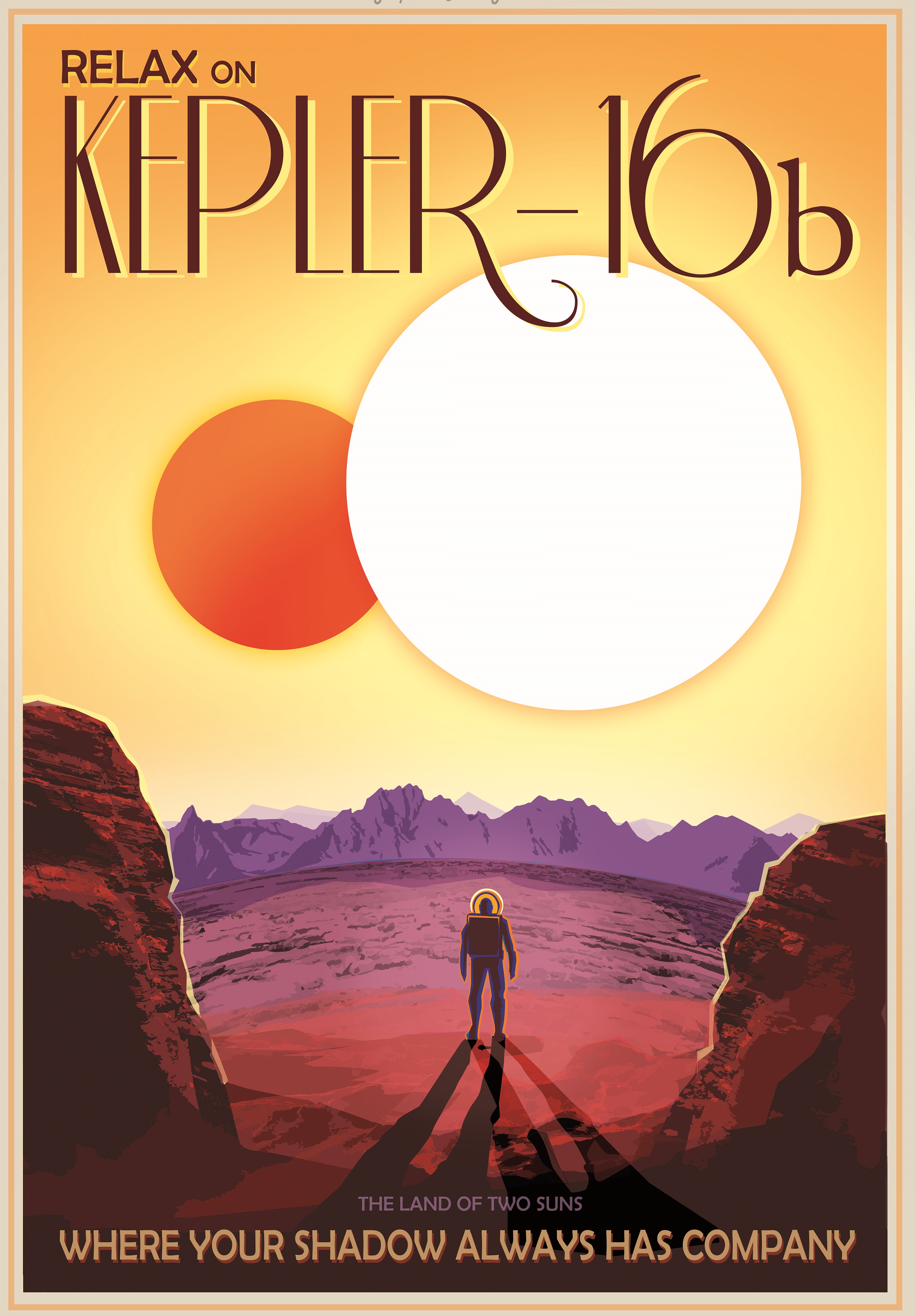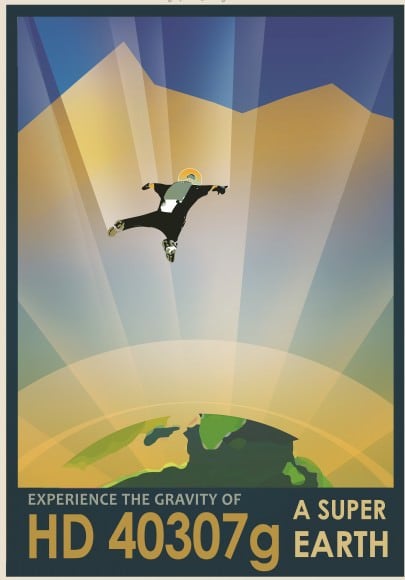What beauty, and what awesome travel slogans! NASA's Jet Propulsion Laboratory has created a set of "Exoplanet Travel Posters" to bring you -- at least in your imagination -- to actual exoplanets.
Whether you have a fancy for skydiving, or doing astronomy with two Suns, it appears there is a spot to whet your imagination. We have another example of the fantastic artwork below.
You can download all three posters so far in
glorious high-definition here
. These are NASA's descriptions for each of the worlds described so far:
is the first Earth-size planet discovered in the potentially 'habitable zone' around another star, where liquid water could exist on the planet's surface. Its star is much cooler and redder than our Sun. If plant life does exist on a planet like Kepler-186f, its photosynthesis could have been influenced by the star's red-wavelength photons, making for a color palette that's very different than the greens on Earth.
Twice as big in volume as the Earth,
straddles the line between "Super-Earth" and "mini-Neptune" and scientists aren't sure if it has a rocky surface or one that's buried beneath thick layers of gas and ice. One thing is certain though: at eight time the Earth's mass, its gravitational pull is much, much stronger.
[caption id="attachment_118024" align="alignnone" width="405"]
A NASA "travel poster" showing off how fun skydiving would be on HD 40307g, a planet that is somewhere in size between a "super-Earth" or "mini-Neptune." Credit: NASA/JPL-Caltech[/caption]
Like Luke Skywalker's planet "Tatooine" in Star Wars, orbits a pair of stars. Depicted here as a terrestrial planet, Kepler-16b might also be a gas giant like Saturn. Prospects for life on this unusual world aren't good, as it has a temperature similar to that of dry ice. But the discovery indicates that the movie's iconic double-sunset is anything but science fiction.
The posters are not only clever, but appear to be homages to the Work Projects Administration's "See America" posters of the 1930s and 1940s, which you can browse through on the
Library of Congress' website
.
 Universe Today
Universe Today

